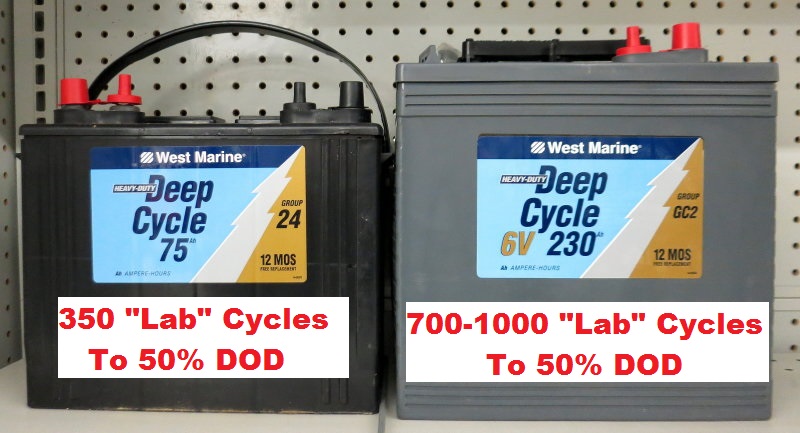Starting battery
- Thread starter MattA
- Start date
jssailem
SBO Weather and Forecasting Forum Jim & John
- Oct 22, 2014
- 23,797
Yeah, maybe. Engineers are pretty conservative to begin with. Adding another safety factor on top of theirs isn't necessarily beneficial. Space, weight, and wallet constraints all need to be considered. I know this guy who went a size larger on his windlass install, and found there was no end to the cascading impactsAnd a pinch of reserve.
The OP doesn't say if anything else is connected to the start battery. For example, a bilge pump or CO monitor would strongly suggest using a bigger battery than the mimimum required.
The engineers might be conservative, but the boat builders picking wire gauge and connectors based on price aren’t.Yeah, maybe. Engineers are pretty conservative to begin with. Adding another safety factor on top of theirs isn't necessarily beneficial. Space, weight, and wallet constraints all need to be considered. I know this guy who went a size larger on his windlass install, and found there was no end to the cascading impacts.
The OP doesn't say if anything else is connected to the start battery. For example, a bilge pump or CO monitor would strongly suggest using a bigger battery than the mimimum required.

A group 24 is a pretty common choice for engines from around that up to at least 30hp.
And if you have room, make it a group 27.The engineers might be conservative, but the boat builders picking wire gauge and connectors based on price aren’t.
A group 24 is a pretty common choice for engines from around that up to at least 30hp.
Greg
A group 24 or 27 will be more than enough and it doesn't need to be a "starting" battery. A good "Marine Deep Cycle" battery will also start the engine. I used a Group 24 deep cycle battery for years on my 35hp Yanmar. A 115 hp Nanni requires a minimum of a group 31.
You may find this article helpful along with many other articles on the MarineHowTo.com site.

You may find this article helpful along with many other articles on the MarineHowTo.com site.

What is a Deep Cycle Battery? - Marine How To
Light Cycle vs. Deeper Cycle NOTE: This article deals with FLOODED marine batteries, not AGM or GEL batteries. The Problem: The problem, as I see it, is one of dishonest marketing where multiple battery types wear the same clothes (sticker) and will perform differently when
marinehowto.com
Manual doesn’t list the required cranking amps, that’s why I asked here to hopefully find out what people with the same boat are using. This will be a starting battery only. Nothing else will be hooked up to it. From advice given on other forums, I will be going with a group 24 starting battery. Thanks for your help.
jssailem
SBO Weather and Forecasting Forum Jim & John
- Oct 22, 2014
- 23,797
That will work for your engine's size. Get a good charging system, and it should last 3-5 years.I will be going with a group 24 starting battery.
Or more than that. We’re at 10 years with a group 24 AGM starting a 3YM30, and it still shows good on a load tester.That will work for your engine's size. Get a good charging system, and it should last 3-5 years.

